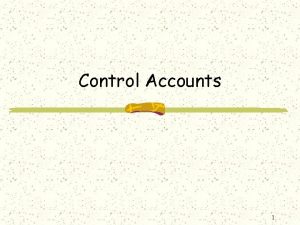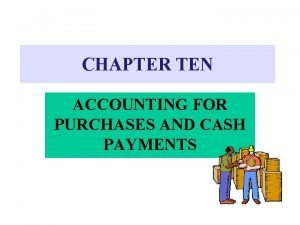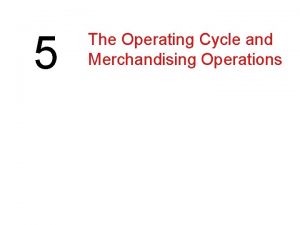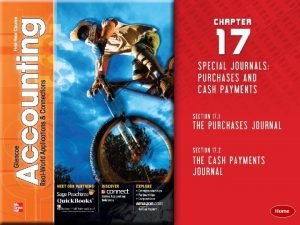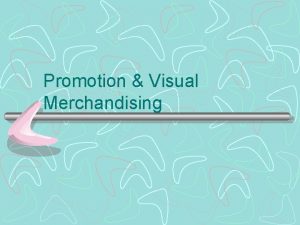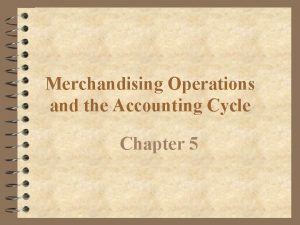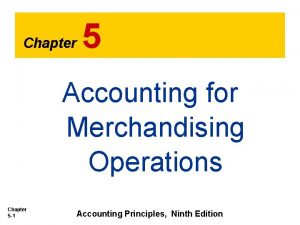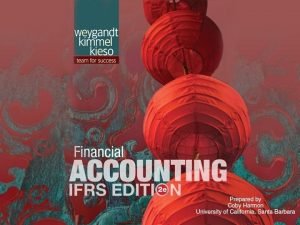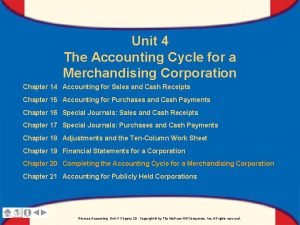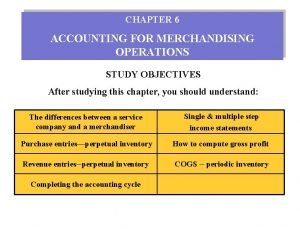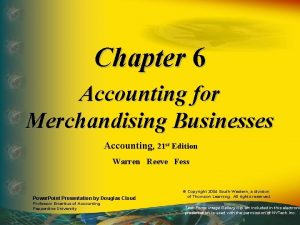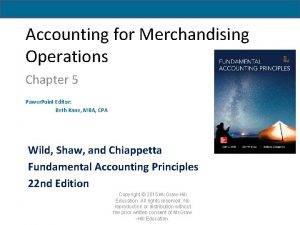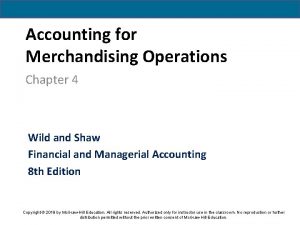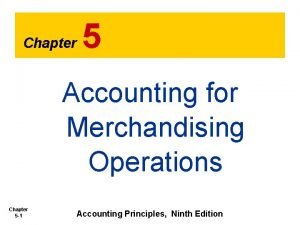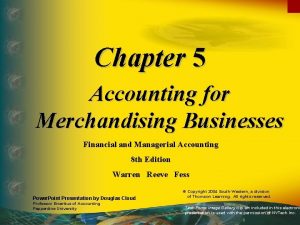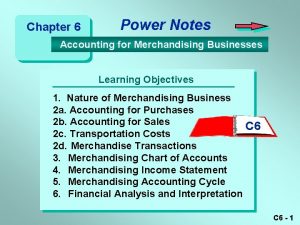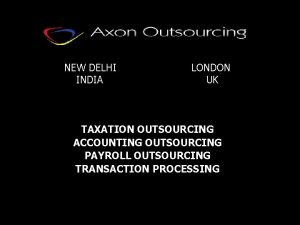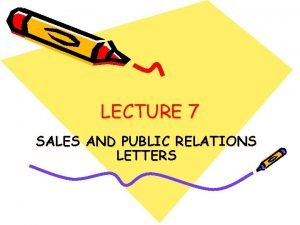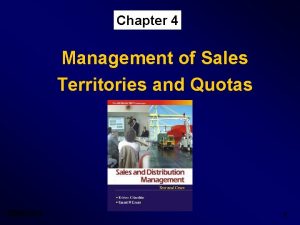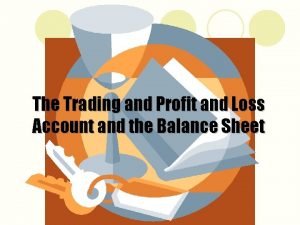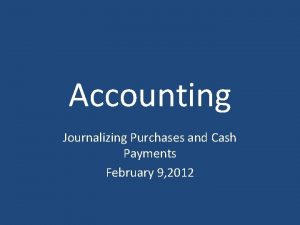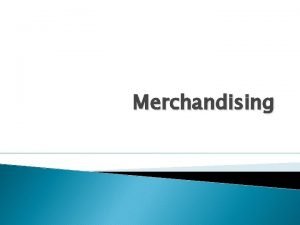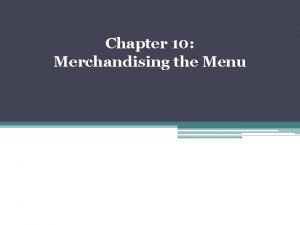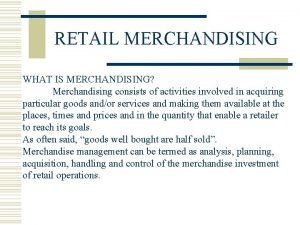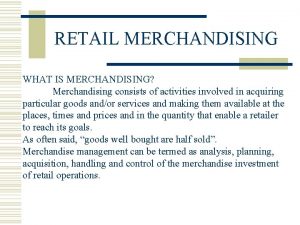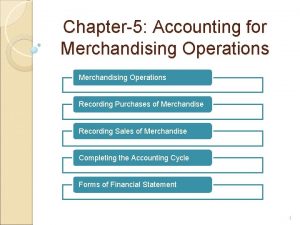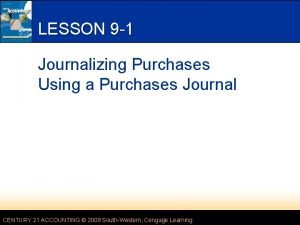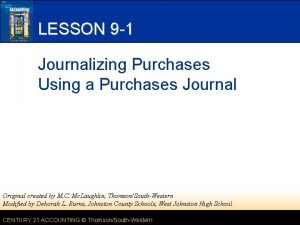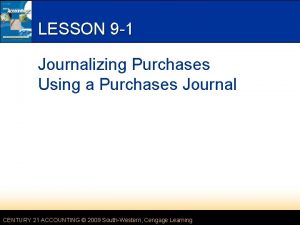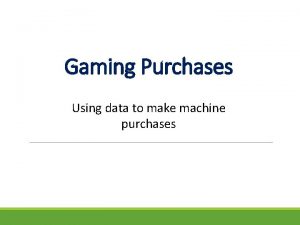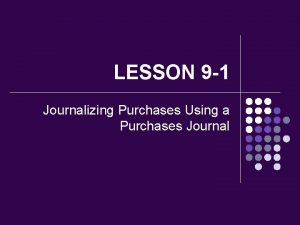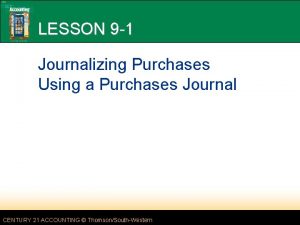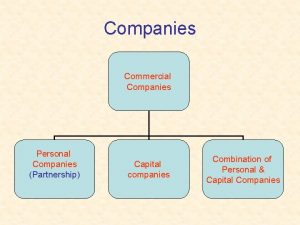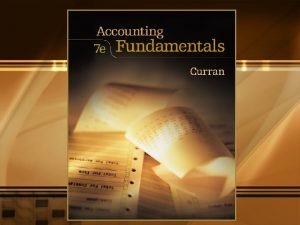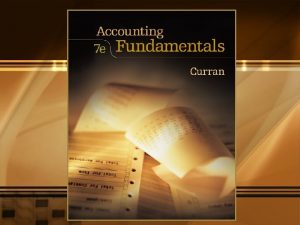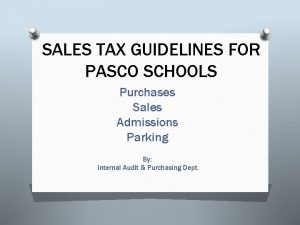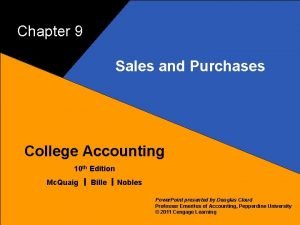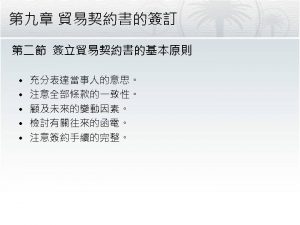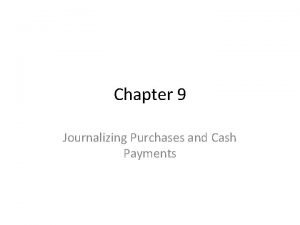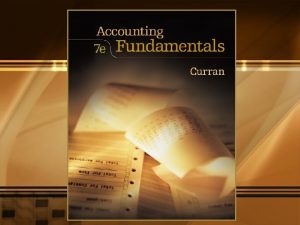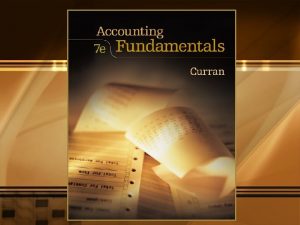Merchandising Companies Accounting for Sales and Purchases USING


























- Slides: 26

Merchandising Companies Accounting for Sales and Purchases USING VARIOUS EXAMPLES FROM A FICTITIOUS COMPANY, WE WILL WALK THROUGH SALES AND PURCHASES OF MERCHANDISE

Merchandising Companies This chapter is about a new type of company which sells merchandise and not services. We will learn about this type of company by looking at various transactions for a seller and purchaser of merchandise. Merchandising companies are either 1) wholesalers who buy from manufacturers and sell to retailers or 2) retailers who buy from either manufacturers or wholesalers and sell to the final customer. We will use a local retail company named “Candy Mart” which purchases from the large candy manufacturers and sells to local candy stores for Halloween baskets. The store’s clients are Happy Halloween, Scary Snacks, and Gruesome Goodies.

As a merchandiser, Candy Mart has this amount of candy at October 1, 20 xx.

At the end of the month: What can happen to Goods Available for Sale (GAFS) during the month? Usually COGS is calculated as: Cost of Goods Sold represents the costs of buying and preparing merchandise for sale

Typically, revenues refer to service companies; whereas sales refer to merchandising companies.






This is a representation of the gross method of sales discount









How do returns and allowances affect the purchase discount when the bill is ultimately paid?





Multi-Step Income Statement Note: Gross Profit (Net sales minus COGS) Gross profit is calculated as GP/Net Sales which yields 27%. This means there is 27% of income available for other expenses after paying the costs of inventory (GOGS). Inherently, the computation is saying 73% of net sales is spent on purchasing inventory.

Classified Balance Sheet for Merchandisers • Operating cycles for companies are usually one year—the definition is a year or the company’s operating cycle which ever is longer. • The company’s operating cycle is defined as the time span from which cash is used to acquire goods/services until cash is received from the sales of goods/services. • Operating cycles determine which assets are expected to be used up in the current period and are classified as “current. ” • If an item is not deemed “current, ” it is considered to be long-term. • Operating cycles for merchandisers are usually less than a year. • Inventory is always a current asset.
 Minority balance in control account
Minority balance in control account Accounting for purchases and cash payments
Accounting for purchases and cash payments What is the operating cycle of a merchandising business
What is the operating cycle of a merchandising business When using a purchases journal,
When using a purchases journal, Types of props in visual merchandising
Types of props in visual merchandising Fob shipping point
Fob shipping point Accounting for merchandising business
Accounting for merchandising business Accounting for merchandising operations chapter 5
Accounting for merchandising operations chapter 5 Accounting for merchandising business ppt
Accounting for merchandising business ppt Post closing trial balance merchandising
Post closing trial balance merchandising Merchandising operations accounting
Merchandising operations accounting Chapter 6 accounting for merchandising businesses
Chapter 6 accounting for merchandising businesses Accounting for merchandising business ppt
Accounting for merchandising business ppt Chapter 4 accounting for merchandising operations
Chapter 4 accounting for merchandising operations Merchandise operations
Merchandise operations Chart of accounts for merchandising business
Chart of accounts for merchandising business Chart of accounts for merchandising business
Chart of accounts for merchandising business Acct 100
Acct 100 Outsourcing accounting in london
Outsourcing accounting in london Social networks asset managers
Social networks asset managers Azure fortune 500
Azure fortune 500 Territorial sales force structure example
Territorial sales force structure example Discuss the nuances of sales letters.
Discuss the nuances of sales letters. Salesforce organization structure
Salesforce organization structure Sales quotas and territories
Sales quotas and territories Vertical format of trading account
Vertical format of trading account Terms review 9-4 accounting
Terms review 9-4 accounting
